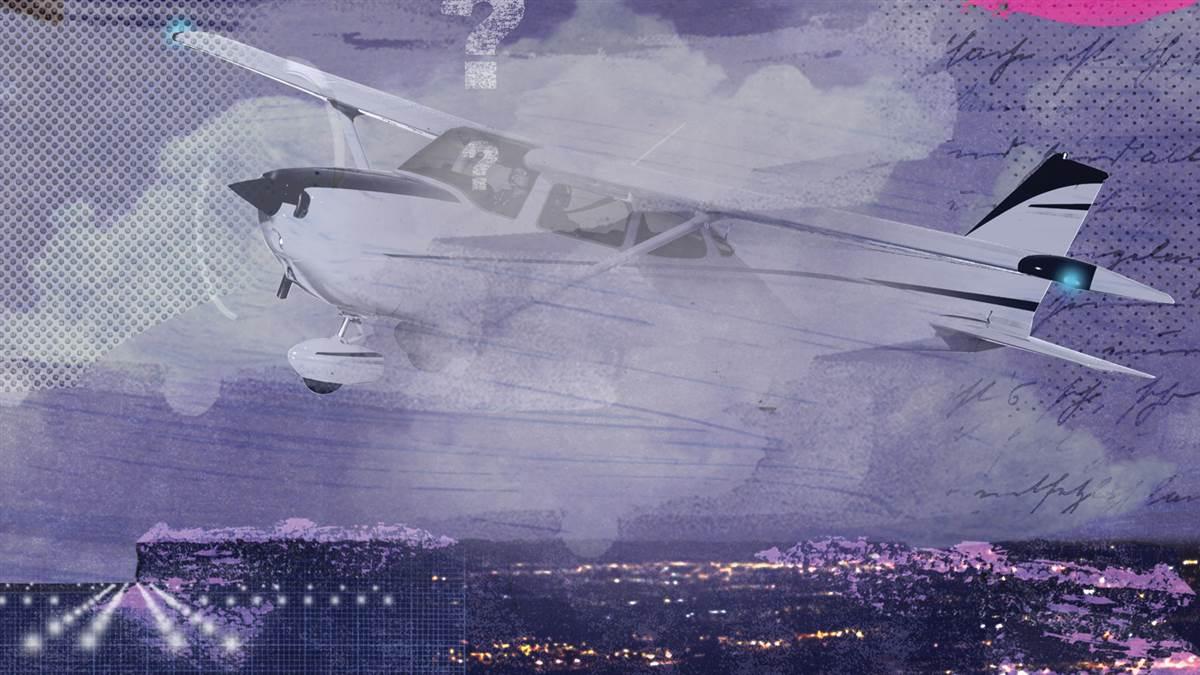
“Flying is long periods of boredom punctuated by moments of sheer terror,” I remember Joe, my former flight instructor, telling me. One day I would find out exactly what he meant.
On an evening in November, my moment of truth arrived. It was about 7 p.m. and dark when I took off for the five-minute flight to the local practice area over the Long Beach, California, harbor. It was to be 45 minutes of practicing turns, climbs, banks, and stalls.
Joe had said there were two cardinal rules in flying. One was to know where you are at all times. The other was to keep track of the weather, even when it’s ceiling and visibility unlimited, as it was when I took off.
The practice maneuvers went well, and it was time to go home. I turned toward the airport and came face to face with a fog bank I had not noticed. The shock was overwhelming.
Most of California’s coastline faces to the west: When flying over land you head west to get to the ocean, east to return. To get to the water from Long Beach airport, you fly south, not west; to return you fly north, not east. I should have remembered that, but I didn’t. I called the tower.
“We have you on radar, fly 360 degrees,” the tower operator said.
I thought, North? Shouldn’t it be east to get back to land? This is California! My mind was locked onto 90 degrees. I was over water, fast approaching a fog bank, no experience flying on instruments, no idea of what to do. I flew into the fog bank and felt disoriented immediately.
“You can look straight down through the fog, if it isn’t too thick, and see the ground to stay oriented,” I remembered Joe saying. He was right; that worked.
“I’m having trouble understanding the instructions, so I’m going back to the harbor,” I told the tower.
“Call us when you’re ready,” the controller said casually, as if trying to ease my mind.
I headed back over the harbor to get my wits together and figure out the altimeter. Nearby Signal Hill was 1,200 feet high, and it was between me and the airport. I knew I had to get the altitude right. Regaining some sense of composure, I asked for instruction again.
“Just follow my direction, heading 360 degrees, due north.”
This time I did what he said, still not really understanding why, and still looking down through the fog. I did understand that this was life or death.
“You’re right over the airport,” he said, after what seemed a long time. I couldn’t see a thing. “I’m turning on the high-intensity runway lights.”
All of a sudden there it was. The sense of relief was palpable. I even remembered to thank the controller—more than once I’m sure. The landing was surprisingly smooth.
How could I make so many mistakes? I remember asking myself.
A few days later, I rented an airplane and practiced over the harbor—during the day. I wanted to get it right as soon as possible.
That solitary night over Long Beach harbor, I learned those lessons—the hard way. Never forget the weather, and always know where you are.



